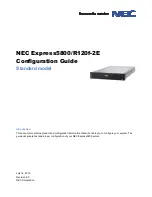
Fuel storage tank
8
17/05/22 Rev:1.0.2
9 PROPER USE OF THE PRODUCT
The fuel storage tank has been designed to be installed for the pneumatic transport of pellets or other
biomass fuels with a medium-fi ne size.
This product is suitable for the storage of biomass fuel such as pellets, olive pomace, corn.
It cannot store substances that are not biomass fuels and that have excessive or too fi ne dimen-
sions, sharp or abrasive surfaces or that are easily compactable.
The tank is not predisposed to be loaded by pressure blowing of the fuel inside it, therefore it should not
be loaded by tanker, but only manually or mechanically and only by fall from the loading inlet on the top.
The loading of the tank can be carried out by manual fi lling of fuel contained in bags or big bags.
Fuel extraction can be made both from the lower and the upper opening by one of the devices in the
catalog.
10 INSTALLATION
It is necessary to leave a free space of adequate size all around the product, in order to permit any
repair, maintenance or inspection operation.
Only qualifi ed technical personnel are authorized to carry out installation, use and maintenance of the
product. All operations must be performed adopting accident prevention regulations, in accordance
with safety warnings (EN 6024-1).
In the event of damage, anomalies or defects of the product, do not install and contact your retailer.
10.1 Place of installation
Below are the main rules to follow for proper installation:
• It is the responsibility of the installer to check always the suitability and characteristics of the product
installation site
• It is the responsibility of the installer to comply with fi re prevention regulations
• It is the responsibility of the installer to ensure that the location and the placement of the tank within it
ensures compliance with the applicable accident prevention regulations
• The tank must not be exposed to atmospheric agents and must not be installed in locations subject to:
high humidity, possible fl ooding, high temperatures, presence of corrosive gases or dusts
• The fl oor on which the magazine is positioned must be tested to stand, at the base of each leg, one
quarter of the total weight of the tank at full load (approximately 400 kg.).
• The positioning of the tank must guarantee around and above it a minimum free space of 50 cm and
the absence of obstacles, even if temporary
• The magazine fabric should never be in contact with wet or rough walls or surfaces.






































